My nemesis the Starling, they come in big groups and take over my feeders and bully the small birds away. I have a love hate relationship with them, as they come and ravage my feeders I will yell out and they scatter for a while to let my other birds feed, I also feel that they need some love during the harsh cold winter time. When they start coming in larger numbers I only put out a certain type of seed that their soft beaks cannot crack open, but my song birds can eat with no problems.

The Starling is a medium sized bird at 7.5 inches or 19cm long they are gray-to-black bird, with white speckles in fall and winter. Some say the white speckles on the black look like a starry night sky. During the summer they have an iridescence to them that looks shiny purple. The bill is long and slender and pointed, it is bright yellow in the spring and turns gray in fall.
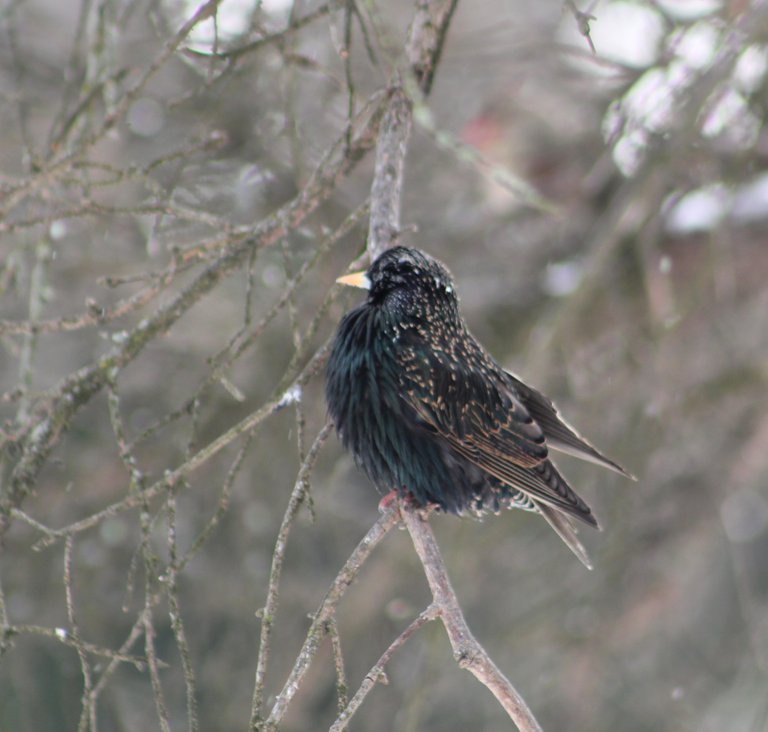
The Starling is considered a nuisance bird here in U.S., they were introduced into New York City in 1890 into Central Park. Their origin is from Asia, when introduced into this country the starling population exploded. They displaced and killed many of the native birds. They are known to take over nests and cavities of other birds killing their young.
Can we find any redeeming qualities of a Starling? Let's find out, one thing good is that they eat tons of flies and fly larva, gypsy moths and caterpillars, and many other insects we don't like. Starlings are mimics, they can reproduce other sounds including humans, other birds and sounds of inanimate objects. Male Starlings are adept at nest making and decorating, mated pairs are generally monogamous and good parents.
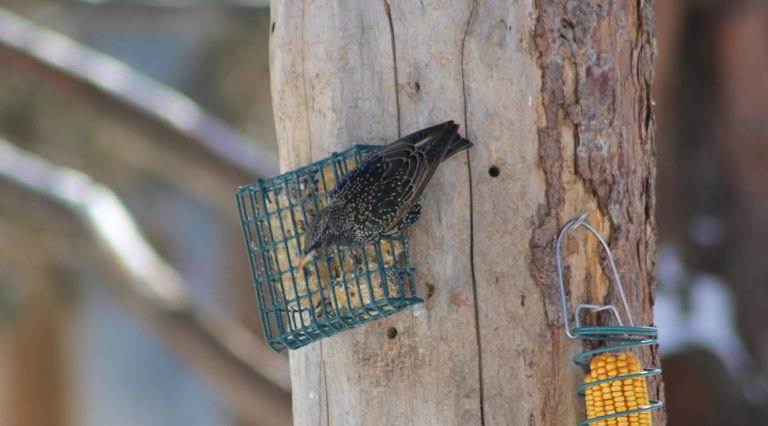
It is easy to point out all their bad qualities the things that are despised by so many of us. The Starling is gluttonous aggressive and territorial. They take over native habitats and kill off or displace songbirds. The US Fish and Wildlife Services consider them and invasive species.
The uniqueness of the Starling is what has made them strong, they are intelligent birds who use this as a way behaviors that allows them to survive and thrive in their environments. They are a flock bird and work together as one. The entire flock will change direction in flight as a survival method against predators.
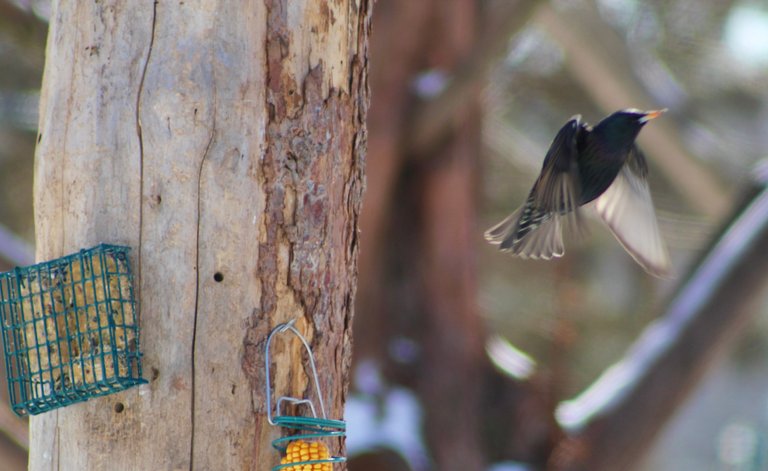
So now that we have learned a few things good and bad about the Starling, do we work at keeping them at bay or should we help eradicate them? It is up to each individual to chose what to do, I myself will shew them from the feeders and take down the food for a while just to keep them from dominating my feeders. I will leave the annihilation to US Field and Wildlife Services for now.
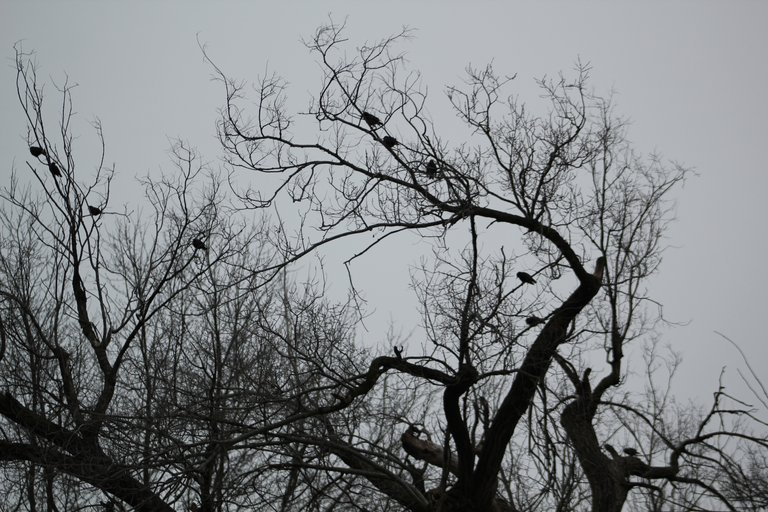
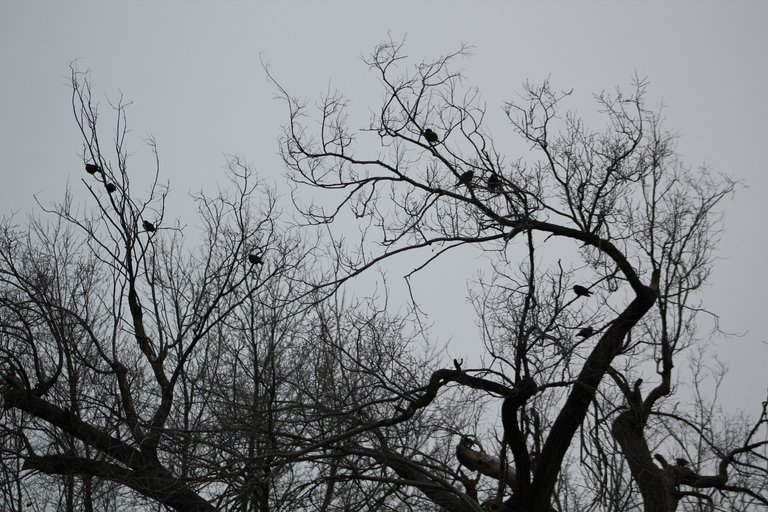
Thank you for stopping by my blog, if you have enjoyed leave and upvote or comment. You can follow me @pinkdragonfly
All photos are mine taken with a Cannon EOS T2i Rebel
*information taken from "Birds of Missouri Field Guide" by Stan Tekiela
www.pethelpful.com "Starlings in the US: The Good, the Bad, the Bold, and the Beautiful" by Connie Smith
Congratulations @pinkdragonfly! You have completed the following achievement on the Hive blockchain and have been rewarded with new badge(s) :
Your next target is to reach 3000 upvotes.
You can view your badges on your board and compare yourself to others in the Ranking
If you no longer want to receive notifications, reply to this comment with the word
STOPCheck out the last post from @hivebuzz:
Great info! What do you feed to help get rid of them? I have never had a problem with them before here in the woods. And certainly never in the winter time. But this year they are tending to take over my feeders. The good thing is is that they don't seem to be doing too much damage to the cylinder feeders, although they certainly do give it a good try. I'd be happy to put out different feeds for a while if it would cause them to move along!
I use a lot of safflower seeds and black oil sunflower seeds, they seem to be unable to crack them open with their soft beaks. When weather permitting I take my feed down for a few days also, when starlings can't find feed in your feeder they will move on. If you are using any fruit in your feed they love that also cracked corn and peanuts out of the shell, so I find that I put less of that out when they are around. The starlings love my cylinder feeder I think because last time I got one with cranberries in it. When I go to get a new one I will leave just get the seed one.
I bought a fruit cylinder feeder last time. They are often on it, but never sm to get much. I'll try making a few changes after it warms up.